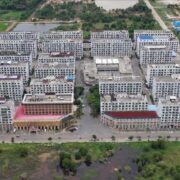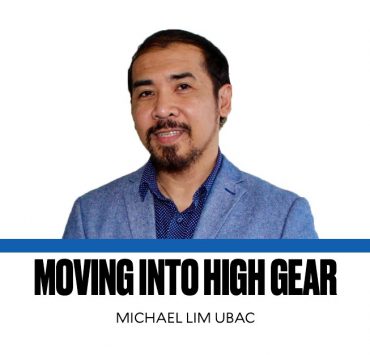A global state of disunion

On March 7, United States President Joseph Biden gave his annual State of the Union speech to Congress. This was his energetic bid for reelection in the 2024 Presidential elections against his predecessor, Donald J. Trump, allaying concerns about his age and physical prowess and to show how America is strong, with a call to continue supporting Ukraine. Some 62 percent of Americans surveyed after the speech felt positive rather than negative.
Ten days later, Vladimir Putin, mentioned six times in Biden’s speech and likened to Adolf Hitler, was reelected as Russian president with 88 percent of the vote. The state of global order is less union, but more disunion or polarization—one indicator being the price of gold rising over $2,222 per ounce, an all-time high. A higher gold price means weaker dollar in real terms.
At the same time, the Dow, Standard and Poor’s 500, and Nasdaq stock market indicators also touched record highs, following hints from Fed chair Jay Powell that Fed interest rates may be peaking with possible cuts later this year.
On that note, the US certainly feels it never had it so good. The total market cap of US stocks increased by $10.2 trillion in 2023. Arising from the artificial intelligence (AI) boom, Nvidia alone added $1 trillion to its investors’ wealth since last year.
Given both US presidential candidates are likely to continue the spending and debt spree in the next four years, will the rest of the world continue to fund its largest debtor?
In the short run, there is no alternative to putting money in the dollar.
The European economy is hobbled by the impending disaster in Ukraine, where Russian forces seem to have taken the initiative due to superiority in arms supply and manpower. Since the North Atlantic Treaty Organization and especially the US cannot afford to lose the Ukraine proxy war, we can expect the conflict to become entrenched, until exhaustion causes one side to collapse and call for truce.
This side of the Pacific will not see any easing of tensions between the US and China. China will take at least two to three years to deal structurally with its real estate debacle. The Japanese economy will try to normalize interest rates so that real income for the aging Japanese workers may recover after years of stagnant nominal wages and a declining yen. A recent Australian Strategic Policy Institute (Aspi) study claimed that “China’s global lead extends to 37 out of 44 technologies that Aspi is now tracking, covering a range of crucial technology fields spanning defence, space, robotics, energy, the environment, biotechnology, artificial intelligence (AI), advanced materials, and key quantum technology areas.” But as one shrewd East Asia Forum observer noted, “While China contributed 27.5 percent to total global [research and development] expenditures in 2022 against the United States’ 35.6 percent, US technology giants still dominate research and innovation in critical technologies such as artificial intelligence.” Chinese tech so far has not been monetized through stock market wealth like the US tech giants.
Many Chinese businessmen concede that America leads in high tech, whereas they are much better on mid-tech, namely the ability to convert technology into production prowess. The US has superior cutting-edge technology in many fields that have military usage, but as the Ukraine war has shown, the production of basic artillery shells still matters.
The global contest therefore hinges on who can convert AI technology into overall productivity across the broad economic front. It is widely accepted that the US is in the lead with China a lagging number two, and the rest still struggling on how to apply AI into day-to-day consumption, production, and distribution functions. Developing and poor countries that fail to upgrade their productivity through AI and knowledge-based innovation will remain in the low-tech category.
In other words, the world is in disunion not just from wealth and income disparities, but through the widening digital and knowledge application gaps. This includes the ability to apply the best knowledge to solve climate warming threats.
The US-China technology race is part of a long march of hegemonic proportions. But as history is shaped by multiple structural forces and random events, the ultimate winner in the 21st century may be neither the two front runners, but one not even in the current radar screen. In this pluriverse of many possibilities, those that work hardest to innovate with new technology may be the real survivor. As Saint Mathew said, “blessed are the meek, for they shall inherit the earth.” Asia News Network
Andrew Sheng is former chair of the Hong Kong Securities and Futures Commission.
The Philippine Daily Inquirer is a member of the Asia News Network, an alliance of 22 media titles in the region.

















